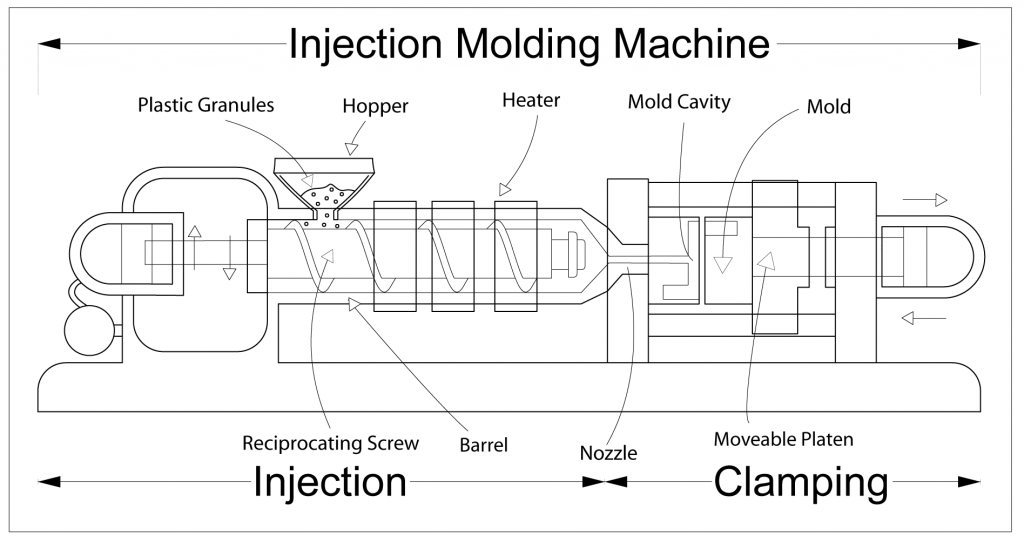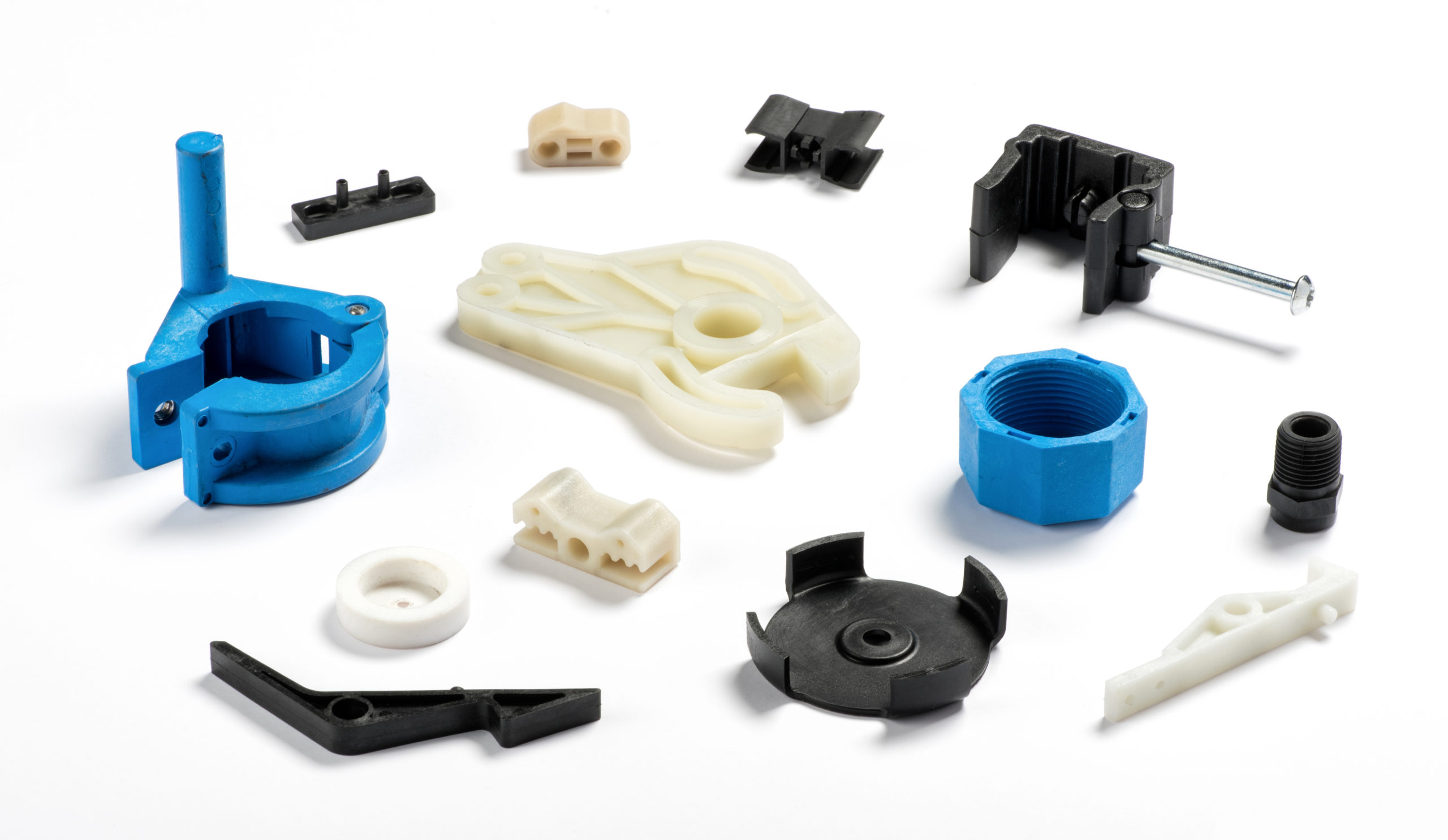The Effect of Plastic Injection Molding on Decreasing Manufacturing Expenses and Waste
The Effect of Plastic Injection Molding on Decreasing Manufacturing Expenses and Waste
Blog Article
Understanding the Fundamentals of Plastic Injection Molding Procedures
Plastic injection molding acts as a foundation of contemporary production, providing a methodical method to generating complicated elements with accuracy. This process not just includes the fundamental steps of melting and infusing products into molds however also involves a nuanced understanding of different affecting factors, such as temperature and stress. As industries significantly demand effectiveness and top quality, the complexities of this approach come to be much more crucial. Discovering these important elements can reveal how even minor adjustments can lead to significant improvements in production results, questioning concerning the capacity for innovation in this well established procedure.
What Is Plastic Injection Molding?
Plastic shot molding is an extensively used manufacturing process that changes thermosetting and thermoplastic products right into accurate and complicated forms. This technique is favored for its ability to create high volumes of identical parts with outstanding precision, making it a crucial method in various industries, consisting of automobile, customer products, and clinical tools.
The procedure includes thawing the picked plastic product and infusing it into a mold and mildew under high pressure. The mold, designed to the specs of the preferred part, allows the molten plastic to materialize as it solidifies and cools. When the material has actually set, the mold is opened up, and the finished part is ejected.
Plastic shot molding supplies numerous benefits, including minimized waste, consistency in manufacturing, and the capability to include elaborate layouts that may be testing with other manufacturing methods. Furthermore, it supports a wide array of materials, each offering unique residential or commercial properties that can be tailored for particular applications. As markets proceed to introduce, plastic injection molding remains at the leading edge, making it possible for the growth of innovative items that meet evolving customer demands.
The Shot Molding Process
The shot molding process is a sophisticated strategy that entails numerous crucial stages to generate premium plastic components. Plastic pellets are fed into a heated barrel where they are melted into a viscous fluid. This molten plastic is then injected under high stress into a precision-engineered mold, which shapes the material right into the wanted form.
As soon as the mold is filled, the plastic is permitted to cool and solidify, taking the shape of the mold and mildew tooth cavity. Cooling time is essential, as it influences the cycle time and the final residential properties of the molded part. After adequate cooling, the mold opens up, and the completed part is ejected utilizing ejector pins.

Materials Made Use Of in Shot Molding
Numerous products can be used in the injection molding process, each offering special properties that satisfy certain applications. One of the most generally utilized materials include thermoplastics, thermosetting plastics, and elastomers.

Thermosetting plastics, like epoxy and phenolic materials, undergo a chemical modification throughout the treating process, leading to a stiff, stringent framework. These products are optimal for applications needing high heat resistance and architectural honesty, commonly utilized in auto components and electrical insulators.
Elastomers, including silicone and rubber-based materials, supply versatility and strength. Their special residential or commercial properties make them ideal for applications that demand elasticity, such as seals and gaskets.
In addition, specialized products like bio-based plastics and compounds are getting grip for their environmental advantages and improved efficiency attributes, broadening the extent of injection molding applications in various industries. Recognizing the buildings of these products is crucial for selecting the appropriate type for certain projects.
Advantages of Shot Molding
Shot molding stands out as a highly effective manufacturing process that uses numerous advantages for producing complicated get rid of accuracy. One of one of the most significant advantages is the ability to develop detailed styles that would certainly be difficult or tough to accomplish with various other approaches (Plastic Injection Molding). The procedure enables detailed attributes and limited tolerances, making certain top notch parts
Furthermore, shot molding is recognized for its quick manufacturing capabilities, making it an optimal choice for high-volume manufacturing. As soon as the mold is produced, components can be produced promptly, reducing preparations and increasing overall efficiency. This efficiency not just lowers manufacturing expenses yet likewise provides an one-upmanship in the market.
The flexibility of products used in injection molding additionally boosts its allure. A vast array of thermoplastics and thermosetting polymers can be utilized, allowing suppliers to pick materials that ideal meet their specific requirements, consisting of versatility, strength, and heat resistance.
Additionally, the procedure minimizes waste, as excess product can frequently be recycled and recycled. This sustainability facet contributes to a reduced environmental impact, making shot molding an accountable manufacturing choice. On the whole, the advantages of injection molding make it a recommended technique for several industries.
Aspects Impacting Item Quality
While many elements can affect product top quality in shot molding, recognizing these aspects is crucial for achieving ideal outcomes. Key elements consist of material option, refining parameters, and mold design.
Material option plays an essential role, as different polymers exhibit why not try these out one-of-a-kind properties that affect flowability, stamina, and thermal security. Inadequate material selection can cause issues such as bending or this contact form incomplete filling.
Processing criteria, including pressure, temperature level, and cycle time, must be meticulously controlled. Variants in these settings can lead to disparities partially dimensions and surface area finish. Exceedingly high temperatures might trigger deterioration of the polymer, while poor pressure can result in brief shots.
Mold and mildew design is equally crucial, as it figures out the circulation of the molten plastic and the cooling process. Improperly made molds might lead to uneven air conditioning prices, leading to residual stresses and dimensional mistakes.

Final Thought
To conclude, plastic injection molding works as an important manufacturing process that makes it possible page for the effective production of premium parts. Proficiency of the shot molding process, including the understanding of products and the impact of numerous factors on item high quality, is essential for attaining optimal outcomes. The advantages of this technique, such as cost-effectiveness and style flexibility, more highlight its value across multiple industries, strengthening its status as a favored choice for high-volume manufacturing.
Plastic shot molding serves as a cornerstone of modern production, offering a methodical method to producing complicated components with precision.Plastic shot molding offers numerous advantages, consisting of minimized waste, consistency in manufacturing, and the capacity to incorporate intricate layouts that might be challenging with other manufacturing approaches (Plastic Injection Molding). As sectors continue to introduce, plastic shot molding continues to be at the forefront, enabling the advancement of innovative items that fulfill advancing customer demands
The injection molding process is an advanced method that entails numerous crucial stages to create high-grade plastic elements.In conclusion, plastic shot molding serves as a vital production process that allows the reliable manufacturing of top quality elements.
Report this page